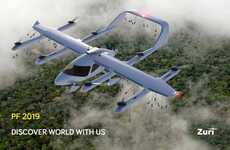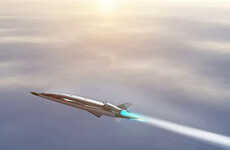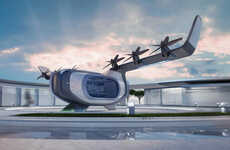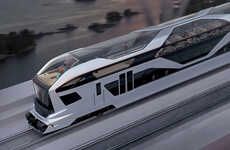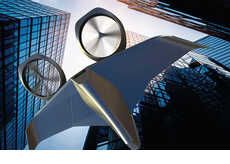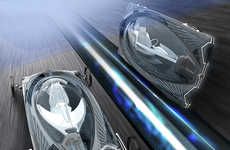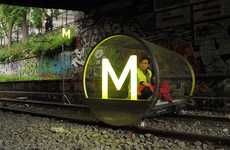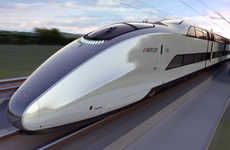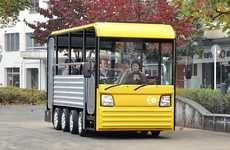The Prototype Aero Train is Like a Real-Life Landspeeder
Meghan Young — May 14, 2011 — Autos
References: irs.mech.tohoku.ac.jp & dvice
We may have seen levitating vehicles before, but this prototype Aero Train is unique in that it doesn't use magnets to lift off of the ground. Instead, it is categorized as a "ground effect vehicle" because it uses fast-moving air and several plane wings to levitate itself above the ground instead.
Developed by a bunch of Japanese researchers led by Yusuke Sugahara from the Tohoku University, this prototype Aero Train could be a very exciting addition to public transportation. Although this model is quite shaky and travels sturdily at only slow speeds, it will most likely pave the way for Aero Trains that are capable of traveling at 124 miles per hour in a "U-shaped concrete channel."
This prototype Aero Train was unveiled during the IEEE International Conference on Robotics in Shanghai, China.
Developed by a bunch of Japanese researchers led by Yusuke Sugahara from the Tohoku University, this prototype Aero Train could be a very exciting addition to public transportation. Although this model is quite shaky and travels sturdily at only slow speeds, it will most likely pave the way for Aero Trains that are capable of traveling at 124 miles per hour in a "U-shaped concrete channel."
This prototype Aero Train was unveiled during the IEEE International Conference on Robotics in Shanghai, China.
Trend Themes
1. Ground Effect Vehicles - Developing new and innovative designs for ground effect vehicles that use fast-moving air to levitate themselves above ground instead of traditional magnet technology.
2. Levitating Public Transportation - Exploring new technological innovations for public transportation using levitation technology, such as Aero Trains, which can travel at high speeds and reduce traffic congestion.
3. U-shaped Concrete Channels - Investigating and designing new infrastructure systems, such as U-shaped concrete channels, to accommodate new levitating transport technologies and increase efficiency in public transportation.
Industry Implications
1. Transportation - Integrating levitation technology into transportation, including public transit and personal vehicles, to create faster and more efficient means of getting around.
2. Aerospace - Applying ground effect technology used in the Aero Train to develop safer and more efficient aircraft designs.
3. Infrastructure - Revolutionizing the transportation infrastructure industry by developing new structures that can accommodate and optimize the use of levitating public transportation systems, such as U-shaped channels.
4.6
Score
Popularity
Activity
Freshness


